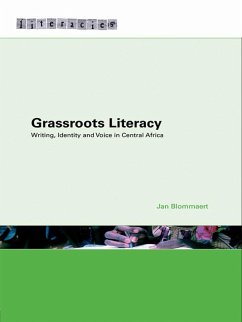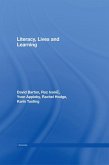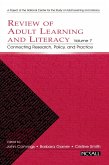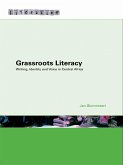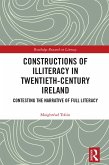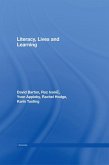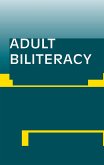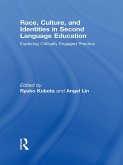54,95 €
54,95 €
inkl. MwSt.
Sofort per Download lieferbar

27 °P sammeln
54,95 €
Als Download kaufen

54,95 €
inkl. MwSt.
Sofort per Download lieferbar

27 °P sammeln
Jetzt verschenken
Alle Infos zum eBook verschenken
54,95 €
inkl. MwSt.
Sofort per Download lieferbar
Alle Infos zum eBook verschenken

27 °P sammeln
- Format: ePub
- Merkliste
- Auf die Merkliste
- Bewerten Bewerten
- Teilen
- Produkt teilen
- Produkterinnerung
- Produkterinnerung

Bitte loggen Sie sich zunächst in Ihr Kundenkonto ein oder registrieren Sie sich bei
bücher.de, um das eBook-Abo tolino select nutzen zu können.
Hier können Sie sich einloggen
Hier können Sie sich einloggen
Sie sind bereits eingeloggt. Klicken Sie auf 2. tolino select Abo, um fortzufahren.

Bitte loggen Sie sich zunächst in Ihr Kundenkonto ein oder registrieren Sie sich bei bücher.de, um das eBook-Abo tolino select nutzen zu können.
What effect has globalization had on our understanding of literacy? Grassroots Literacy seeks to address the relationship between globalization and the widening gap between 'grassroots' literacies, or writings from ordinary people and local communities, and 'elite' literacies.
- Geräte: eReader
- mit Kopierschutz
- eBook Hilfe
- Größe: 3.34MB
Andere Kunden interessierten sich auch für
![Literacy, Lives and Learning (eBook, ePUB) Literacy, Lives and Learning (eBook, ePUB)]() David BartonLiteracy, Lives and Learning (eBook, ePUB)54,95 €
David BartonLiteracy, Lives and Learning (eBook, ePUB)54,95 €![Review of Adult Learning and Literacy, Volume 7 (eBook, ePUB) Review of Adult Learning and Literacy, Volume 7 (eBook, ePUB)]() Review of Adult Learning and Literacy, Volume 7 (eBook, ePUB)26,95 €
Review of Adult Learning and Literacy, Volume 7 (eBook, ePUB)26,95 €![Grassroots Literacy (eBook, PDF) Grassroots Literacy (eBook, PDF)]() Jan BlommaertGrassroots Literacy (eBook, PDF)54,95 €
Jan BlommaertGrassroots Literacy (eBook, PDF)54,95 €![Constructions of Illiteracy in Twentieth-Century Ireland (eBook, ePUB) Constructions of Illiteracy in Twentieth-Century Ireland (eBook, ePUB)]() Maighréad TobinConstructions of Illiteracy in Twentieth-Century Ireland (eBook, ePUB)40,95 €
Maighréad TobinConstructions of Illiteracy in Twentieth-Century Ireland (eBook, ePUB)40,95 €![Literacy, Lives and Learning (eBook, PDF) Literacy, Lives and Learning (eBook, PDF)]() David BartonLiteracy, Lives and Learning (eBook, PDF)54,95 €
David BartonLiteracy, Lives and Learning (eBook, PDF)54,95 €![Adult Biliteracy (eBook, ePUB) Adult Biliteracy (eBook, ePUB)]() Adult Biliteracy (eBook, ePUB)47,95 €
Adult Biliteracy (eBook, ePUB)47,95 €![Race, Culture, and Identities in Second Language Education (eBook, ePUB) Race, Culture, and Identities in Second Language Education (eBook, ePUB)]() Race, Culture, and Identities in Second Language Education (eBook, ePUB)54,95 €
Race, Culture, and Identities in Second Language Education (eBook, ePUB)54,95 €-
-
-
What effect has globalization had on our understanding of literacy? Grassroots Literacy seeks to address the relationship between globalization and the widening gap between 'grassroots' literacies, or writings from ordinary people and local communities, and 'elite' literacies.
Dieser Download kann aus rechtlichen Gründen nur mit Rechnungsadresse in A, B, BG, CY, CZ, D, DK, EW, E, FIN, F, GR, HR, H, IRL, I, LT, L, LR, M, NL, PL, P, R, S, SLO, SK ausgeliefert werden.
Produktdetails
- Produktdetails
- Verlag: Taylor & Francis eBooks
- Seitenzahl: 240
- Erscheinungstermin: 3. Juni 2008
- Englisch
- ISBN-13: 9781134092437
- Artikelnr.: 38251925
- Verlag: Taylor & Francis eBooks
- Seitenzahl: 240
- Erscheinungstermin: 3. Juni 2008
- Englisch
- ISBN-13: 9781134092437
- Artikelnr.: 38251925
- Herstellerkennzeichnung Die Herstellerinformationen sind derzeit nicht verfügbar.
Jan Blommaert is Distinguished Professor of Linguistic Anthropology at the University of Jyväskylä, Finland, as well as Professor of Linguistic Anthropology at Tilburg University. His publications include Debating Diversity (co-author, Routledge, 1998), Language Ideological Debates (editor, 1999) and Discourse: A Critical Introduction (author, 2005).
Table of Contents
Preface
PART 1: GRASSROOTS LITERACY
1. Introduction: Grassroots literacy and literacy regimes
1.1. Yes I can write
1.2. Writing
1.3. Grassroots literacy
1.4. Ethnographies of text
1.5. Globalization
PART 2: THE LIVES OF JULIEN
2. Three lives for Mrs Arens
2.1. Three versions of a life
2.2. Writing with an accent
2.3. Julien's life: a storyline
2.4. Writing (as) a (way of) life
2.5. Context and pretext
3. Genres and repertoires
3.1. Resources
3.2. On genre
3.3. Emerging genres in an emerging tradition
3.4. Histories and letters
3.5. The repertoire
3.6. The misfit
4. Writing, remembering and being
4.1. Emerging genres, emerging lives
4.2. Writing and remembering
4.3. Who is Julien?
4.4. Textuality and subjectivity
PART 3: TSHIBUMBA THE HISTORIAN
5. Tshibumba: Artist, painter, historian
5.1. Paintings, conversations, and texts
5.2. Tshibumba Kanda Matulu
5.3. The storyline
6. The aesthetics of grassroots literacy
6.1. Writing as drawing
6.2. Tshibumba's writing and drawing
6.3. Tshibumba's voice
6.4. A disciplined voice
7. Sources as resources
7.1. The archive again
7.2. A national history with local resources
7.3. Tshibumba's voices
8. The grassroots historian's craft
8.1. Tshibumba's historiographic methodology
8.2. Grassroots historiography and popular consciousness
8.3. Artist, painter, grassroots historian
PART 4: JULIEN, TSHIBUMBA AND BEYOND
9. Reflections
9.1. Lives, literacy, subjectivity
9.2. The skeleton of literacy practices
9.3. Grassroots literacy in globalization
9.4. History from below
9.5. Conclusion
NOTES & REFERENCES
Preface
PART 1: GRASSROOTS LITERACY
1. Introduction: Grassroots literacy and literacy regimes
1.1. Yes I can write
1.2. Writing
1.3. Grassroots literacy
1.4. Ethnographies of text
1.5. Globalization
PART 2: THE LIVES OF JULIEN
2. Three lives for Mrs Arens
2.1. Three versions of a life
2.2. Writing with an accent
2.3. Julien's life: a storyline
2.4. Writing (as) a (way of) life
2.5. Context and pretext
3. Genres and repertoires
3.1. Resources
3.2. On genre
3.3. Emerging genres in an emerging tradition
3.4. Histories and letters
3.5. The repertoire
3.6. The misfit
4. Writing, remembering and being
4.1. Emerging genres, emerging lives
4.2. Writing and remembering
4.3. Who is Julien?
4.4. Textuality and subjectivity
PART 3: TSHIBUMBA THE HISTORIAN
5. Tshibumba: Artist, painter, historian
5.1. Paintings, conversations, and texts
5.2. Tshibumba Kanda Matulu
5.3. The storyline
6. The aesthetics of grassroots literacy
6.1. Writing as drawing
6.2. Tshibumba's writing and drawing
6.3. Tshibumba's voice
6.4. A disciplined voice
7. Sources as resources
7.1. The archive again
7.2. A national history with local resources
7.3. Tshibumba's voices
8. The grassroots historian's craft
8.1. Tshibumba's historiographic methodology
8.2. Grassroots historiography and popular consciousness
8.3. Artist, painter, grassroots historian
PART 4: JULIEN, TSHIBUMBA AND BEYOND
9. Reflections
9.1. Lives, literacy, subjectivity
9.2. The skeleton of literacy practices
9.3. Grassroots literacy in globalization
9.4. History from below
9.5. Conclusion
NOTES & REFERENCES
Table of Contents
Preface
PART 1: GRASSROOTS LITERACY
1. Introduction: Grassroots literacy and literacy regimes
1.1. Yes I can write
1.2. Writing
1.3. Grassroots literacy
1.4. Ethnographies of text
1.5. Globalization
PART 2: THE LIVES OF JULIEN
2. Three lives for Mrs Arens
2.1. Three versions of a life
2.2. Writing with an accent
2.3. Julien's life: a storyline
2.4. Writing (as) a (way of) life
2.5. Context and pretext
3. Genres and repertoires
3.1. Resources
3.2. On genre
3.3. Emerging genres in an emerging tradition
3.4. Histories and letters
3.5. The repertoire
3.6. The misfit
4. Writing, remembering and being
4.1. Emerging genres, emerging lives
4.2. Writing and remembering
4.3. Who is Julien?
4.4. Textuality and subjectivity
PART 3: TSHIBUMBA THE HISTORIAN
5. Tshibumba: Artist, painter, historian
5.1. Paintings, conversations, and texts
5.2. Tshibumba Kanda Matulu
5.3. The storyline
6. The aesthetics of grassroots literacy
6.1. Writing as drawing
6.2. Tshibumba's writing and drawing
6.3. Tshibumba's voice
6.4. A disciplined voice
7. Sources as resources
7.1. The archive again
7.2. A national history with local resources
7.3. Tshibumba's voices
8. The grassroots historian's craft
8.1. Tshibumba's historiographic methodology
8.2. Grassroots historiography and popular consciousness
8.3. Artist, painter, grassroots historian
PART 4: JULIEN, TSHIBUMBA AND BEYOND
9. Reflections
9.1. Lives, literacy, subjectivity
9.2. The skeleton of literacy practices
9.3. Grassroots literacy in globalization
9.4. History from below
9.5. Conclusion
NOTES & REFERENCES
Preface
PART 1: GRASSROOTS LITERACY
1. Introduction: Grassroots literacy and literacy regimes
1.1. Yes I can write
1.2. Writing
1.3. Grassroots literacy
1.4. Ethnographies of text
1.5. Globalization
PART 2: THE LIVES OF JULIEN
2. Three lives for Mrs Arens
2.1. Three versions of a life
2.2. Writing with an accent
2.3. Julien's life: a storyline
2.4. Writing (as) a (way of) life
2.5. Context and pretext
3. Genres and repertoires
3.1. Resources
3.2. On genre
3.3. Emerging genres in an emerging tradition
3.4. Histories and letters
3.5. The repertoire
3.6. The misfit
4. Writing, remembering and being
4.1. Emerging genres, emerging lives
4.2. Writing and remembering
4.3. Who is Julien?
4.4. Textuality and subjectivity
PART 3: TSHIBUMBA THE HISTORIAN
5. Tshibumba: Artist, painter, historian
5.1. Paintings, conversations, and texts
5.2. Tshibumba Kanda Matulu
5.3. The storyline
6. The aesthetics of grassroots literacy
6.1. Writing as drawing
6.2. Tshibumba's writing and drawing
6.3. Tshibumba's voice
6.4. A disciplined voice
7. Sources as resources
7.1. The archive again
7.2. A national history with local resources
7.3. Tshibumba's voices
8. The grassroots historian's craft
8.1. Tshibumba's historiographic methodology
8.2. Grassroots historiography and popular consciousness
8.3. Artist, painter, grassroots historian
PART 4: JULIEN, TSHIBUMBA AND BEYOND
9. Reflections
9.1. Lives, literacy, subjectivity
9.2. The skeleton of literacy practices
9.3. Grassroots literacy in globalization
9.4. History from below
9.5. Conclusion
NOTES & REFERENCES
